Scarsdale Mathcounts Go to Nationals -- and a Math Problem For You
- Details
- Written by: Joanne Wallenstein
- Hits: 5733
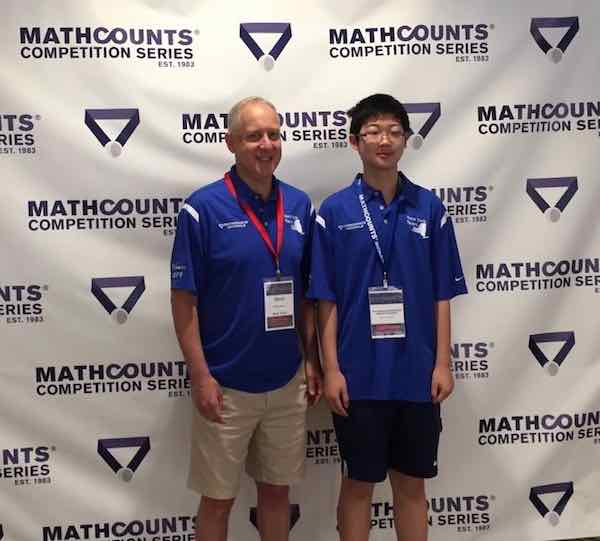
The weekend of May 11th, SHS Popham 8 math teacher Steve Weiss coached the NY State Mathcounts team at the National Competition in Orlando, Florida. The 4-person team was captained by Scarsdale Middle School 8th grader Matthew Zhao. He led the team to a 9th place finish out of 55 teams. Matthew individually finished among the top 20% of all individuals competing. Pictured above are Steve Weiss and Matthew Zhao. (Photo by Tao Zhao)
Test your own mathematics skills! Here is an example problem Matthew had to solve at the competition:

Twelve Faculty Members Attain Tenure
- Details
- Written by: Joanne Wallenstein
- Hits: 4852
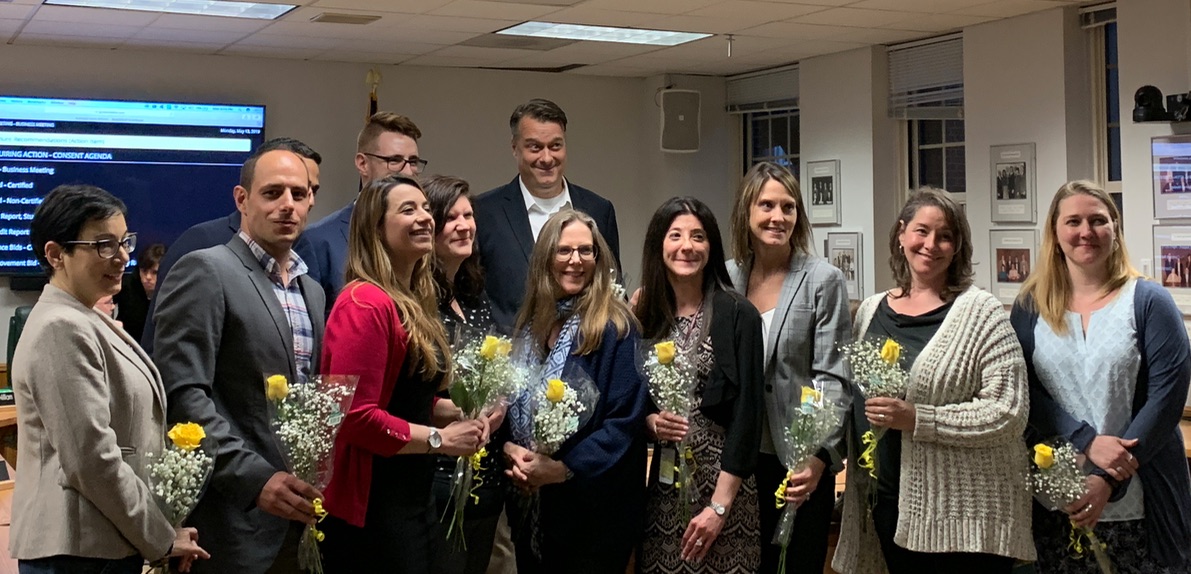 There were smiles all around at the opening of the May 13 meeting of the Scarsdale Board of Education when 12 teachers attained tenure. Schools Superintendent Dr. Hagerman thanked Scarsdale’s faculty and said that getting tenure was an achievement and an accomplishment. To the awardees he said, “You have believed in us and we believe in you.”
There were smiles all around at the opening of the May 13 meeting of the Scarsdale Board of Education when 12 teachers attained tenure. Schools Superintendent Dr. Hagerman thanked Scarsdale’s faculty and said that getting tenure was an achievement and an accomplishment. To the awardees he said, “You have believed in us and we believe in you.”
Assistant Superintendent Drew Patrick called tenure, “a significant accomplishment in the career of an educator,” and reviewed the rigorous process for evaluating teachers including classroom observations, ratings, mentoring, year-end conferences, a portfolio of artifacts as well as feedback from the school community and an administrative review panel.
He said, “the rigors are commensurate with the achievement.”
Here is the list of the twelve faculty members who were awarded tenure on May 13, 2019. Congratulations!
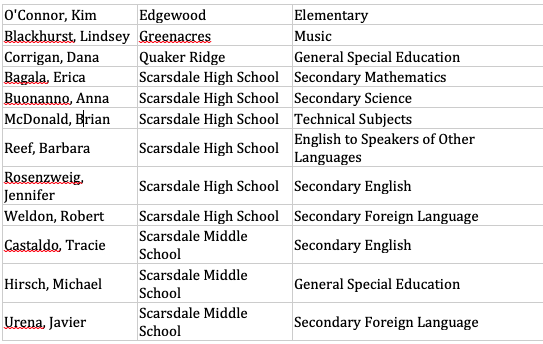
Lacrosse Team Loses to Rival From Mamaroneck in Close Game
- Details
- Written by: Anna Cho
- Hits: 4435
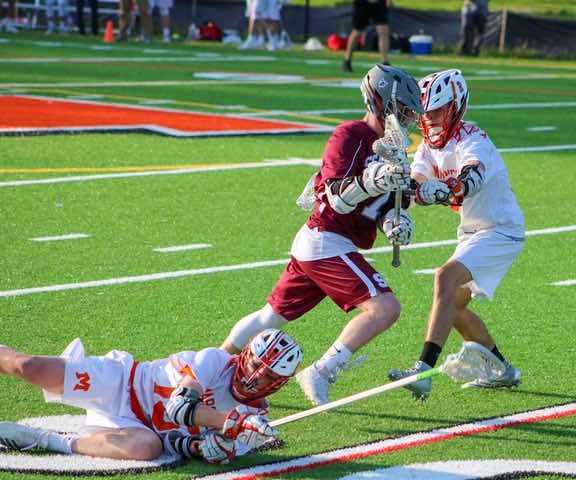 Senior Will Maybaum, is seen heading down field with the ball.The Scarsdale Boys Varsity Lacrosse team had a very competitive match on Tuesday against Mamaroneck High School. The boys played a great game, but unfortunately lost 10-8 to Mamaroneck. However, there was never a lack of spirit or enthusiasm from either the players or the fans. The boys constantly cheered for one other, in a display of teamwork and support. Despite being an away game, countless animated Scarsdale students appeared in the stands, and outnumbered the amount of Mamaroneck fans. In spite of this loss, the boys have been having a wonderful season with an 11-3 record. Don’t miss their next game Saturday, May 11th, at Nyack High School!
Senior Will Maybaum, is seen heading down field with the ball.The Scarsdale Boys Varsity Lacrosse team had a very competitive match on Tuesday against Mamaroneck High School. The boys played a great game, but unfortunately lost 10-8 to Mamaroneck. However, there was never a lack of spirit or enthusiasm from either the players or the fans. The boys constantly cheered for one other, in a display of teamwork and support. Despite being an away game, countless animated Scarsdale students appeared in the stands, and outnumbered the amount of Mamaroneck fans. In spite of this loss, the boys have been having a wonderful season with an 11-3 record. Don’t miss their next game Saturday, May 11th, at Nyack High School!
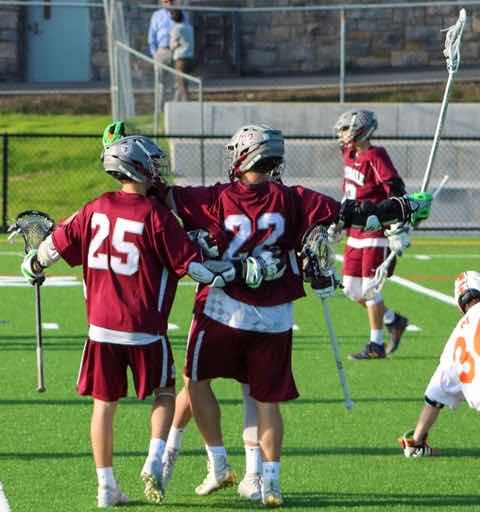 The raiders are celebrating a goal made by senior Andrew Bernstein.
The raiders are celebrating a goal made by senior Andrew Bernstein.
 New recruit, Andrew Greenspan, wins the faceoff against Mamaroneck’s Shane Smith.
New recruit, Andrew Greenspan, wins the faceoff against Mamaroneck’s Shane Smith.
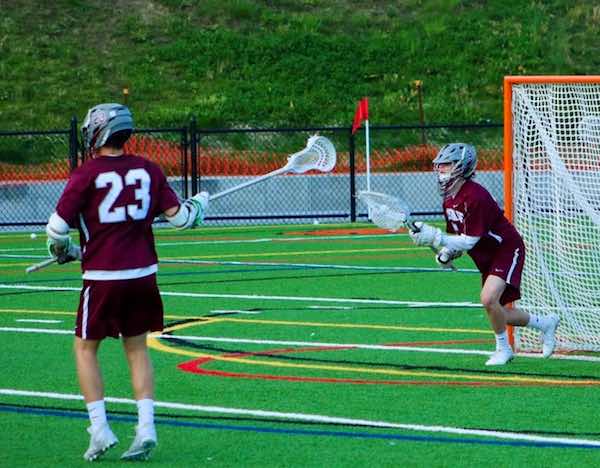 Sophomore goalkeeper, Sam Silverman, leaves the crease to transition and stops a goal.
Sophomore goalkeeper, Sam Silverman, leaves the crease to transition and stops a goal.
 Sophomore Ben Miller, can be seen outrunning two Mamaroneck players.
Sophomore Ben Miller, can be seen outrunning two Mamaroneck players.
SHS Students Use Electromagnets to Create Spiderman Wall Climbing Technology
- Details
- Written by: Joanne Wallenstein
- Hits: 1039706
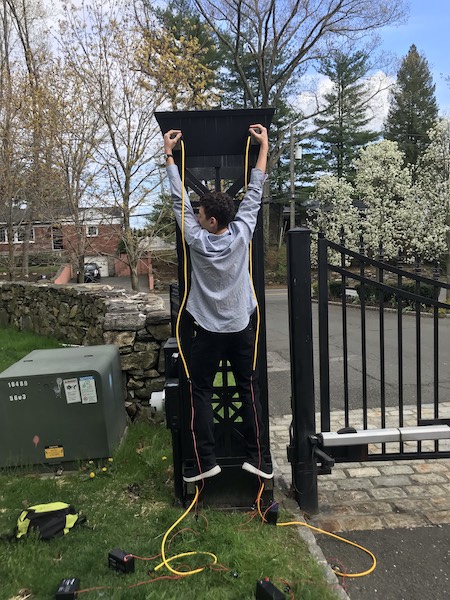 As a final project for their Computer Science course, SHS students Aron Frishberg and Joshua Im created functional Spider-Man wall climbing technology. The Spider-Man technology uses very strong electromagnets magnets that can lift great amounts of weight when powered, but without power, are completely deactivated. The two use the magnets to climb metal structures and continue to work on many other gadgets including Thor's hammer and Spider-Man webshooters.
As a final project for their Computer Science course, SHS students Aron Frishberg and Joshua Im created functional Spider-Man wall climbing technology. The Spider-Man technology uses very strong electromagnets magnets that can lift great amounts of weight when powered, but without power, are completely deactivated. The two use the magnets to climb metal structures and continue to work on many other gadgets including Thor's hammer and Spider-Man webshooters.
In the pictures shown, look under the climber’s feet and hands to see a magnet connected via yellow wire to a battery.
We asked the two a few questions, and here is what they shared:
Tell us about yourself and your partner Joshua Im - how did you become interested in climbing wall technology?
Josh and I go to SHS and we take a computer science class. We both love superheroes especially Spider-Man and decided to bring Spider-Man to life. We were brainstorming one night and the idea just popped into our heads. We did a ton of research and we did it.
What class are you taking, who is the teacher and what was the assignment?
We are taking Computer Science 913, which is taught by Mr. Leong. The assignment was to create a project for the STEM fair at the end of the year. It could be anything tech related, including engineering or coding.
Are you using any of the equipment in the new Design Lab to do your project?
We did not use the design lab for the wall climbing technology, but we are using the 3d printers for our next addition to this project, which is functional webshooters.
Please describe your project - what does it do?
We use 12v lead acid batteries to power four 275lb 12v electromagnets. They are all controlled by buttons individually so you can climb with ease. It allows anyone to climb a magnetic surface.
What metal structures have you climbed? How much weight do the magnets hold?
We haven’t really done that many tests but we’re able to climb a magnetic stair support at Greenacres School. Each magnet can hold up to 275lbs.
What practical use does this project have?
We believe it has some very promising possibilities, such as climbing buildings.
What does Mr. Leong think about the project?
He believes that this project shows great promise and has a good chance of winning the STEM fair.
Carnival Cancelled Friday Night - Extended Hours on Saturday
- Details
- Written by: Joanne Wallenstein
- Hits: 3233
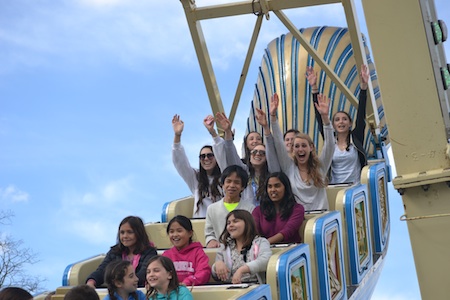 Due to the weather, the carnival at Scarsdale High School has been cancelled for Friday night April 26th. However there will be extended hours on Saturday April 27 when the carnival will run from 12 - 7 pm.
Due to the weather, the carnival at Scarsdale High School has been cancelled for Friday night April 26th. However there will be extended hours on Saturday April 27 when the carnival will run from 12 - 7 pm.
Here is the note from Scarsdale High School Principal Kenneth Bonamo:
Because of the weather, the SHS carnival will not run tonight.
The hours of the carnival tomorrow will be extended from 12 noon through 7 p.m. All pre-sold bracelets will be honored tomorrow.
Here's to a great carnival tomorrow!
Regards,
Ken
Kenneth Bonamo
Principal
Scarsdale High School










